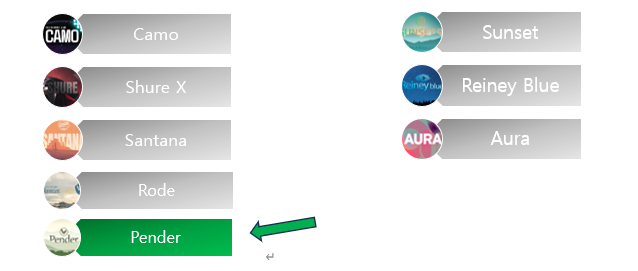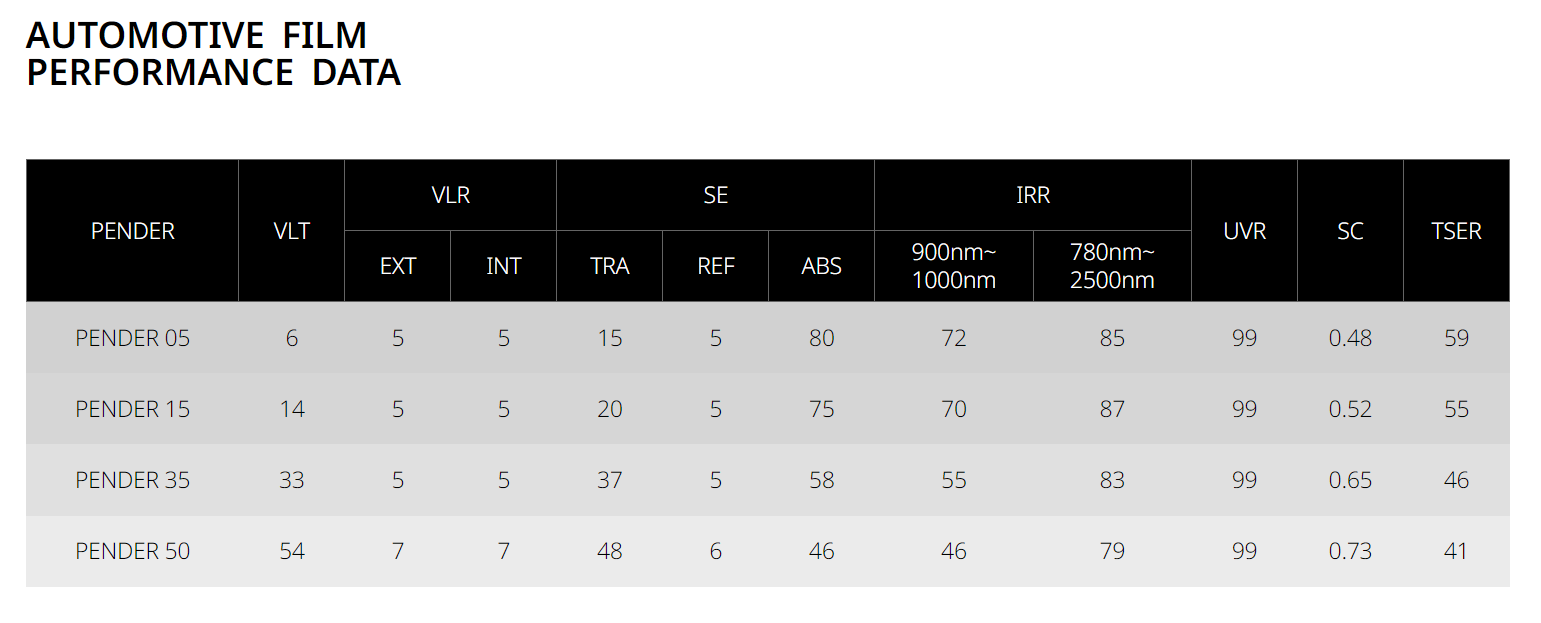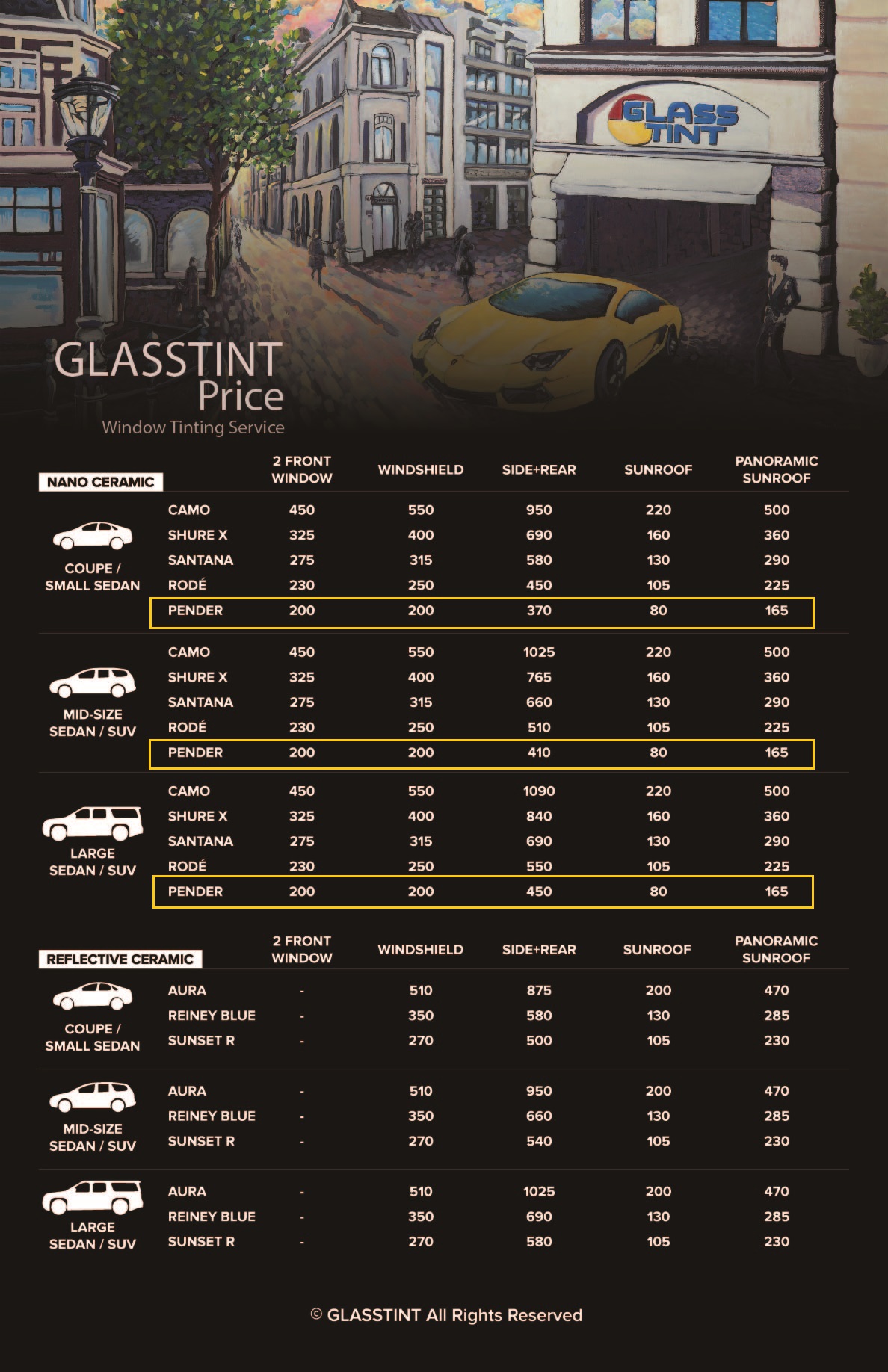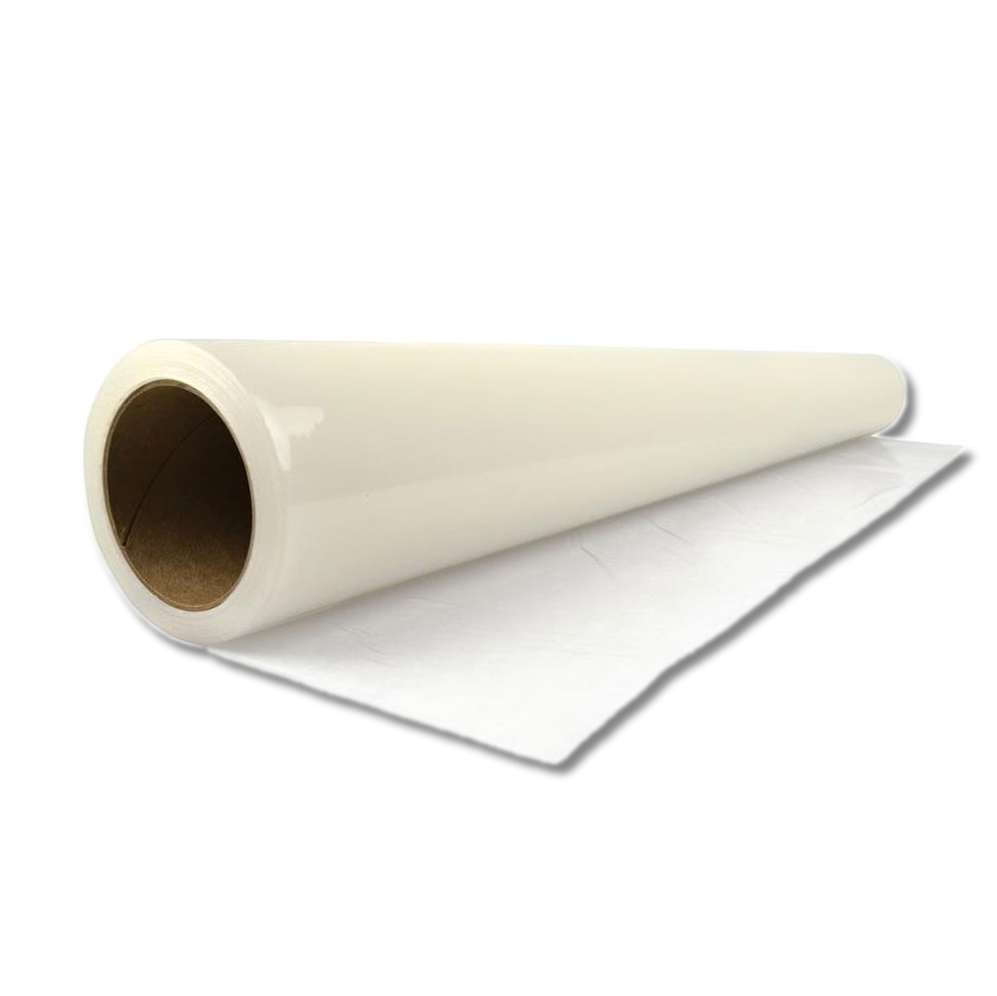blog
Types and Grades of Ceramic Window Tint | GLASSTINT Pender Ceramic Tint
- 2024.08.06
- Martin. C
Overview
The development of window film began in the 1960s and progressed through different types such as Dyed, Hybrid, Carbon, and eventually it evolved through Ceramic tint by the 2010s. The GLASSTINT window film brand, launched in 2006, has now refined ceramic tint technology, offering an array of eight ceramic window tint products with balanced performance and color options. Among these, the Pender product stands as GLASSTINT's most fundamental and traditional ceramic film.
Despite being labeled as a basic film within the GLASSTINT ceramic film lineup, it significantly outperforms many other films in the market. This film boasts an impressive 70% infrared heat rejection rate, categorizing it as a high-performance tint product. It is crucial to note that, although Pender is the entry-level high-performance heat rejection product in the brand, it should not be mistaken for a low-grade or inexpensive option.

Cost-Effective Tint: Pender Film
Indeed, the Pender film is a highly popular functional film due to its excellent performance relative to its installation cost, making it a highly efficient choice for consumers. The tinting price is almost the same as Carbon film, but its heat rejection capability is 2-3 times higher, which is a significant advantage.
Why Does Pender Ceramic Tint Outclass Dyed, Hybrid, and Carbon Tint Grades?
Dyed films, based on organic dyes, block only 0-8% of infrared heat, while simple Hybrid and Carbon tints manage only 10-40%. Consequently, even after installing window tint during hot summer months, the car interior remains uncomfortably warm. This situation is prevalent in about 80% of vehicles in the market, as consumers often do not realize the importance of tinting in enhancing driving comfort.

Do You Know Why Tint Film Color Changes Affect Its Functional Performance?
True ceramic tint films, especially Pender film, do not change color even until the end of the vehicle's life. This is a fact guaranteed by the manufacturer. If a so-called ceramic tint film, which should be black, starts to turn purple, it is merely a fake ceramic film marketed under misleading terms. The GLASSTINT Pender Ceramic Film never changes color.
Ease of Installation
Does the difficulty in handling the film and the heat shrinking process during tinting affect the film quality? Absolutely. Regardless of the inherent quality of the film, if the installer struggles with handling, cutting, heat shrinking, and squeegeeing, the tinting quality cannot be high. The film should have a smooth and delicate texture and be easy to remove small particles. Additionally, if a mistake requires the film to be removed without leaving transfer marks on the glass, it can save installation time. Furthermore, even if you rub the film vigorously with hard and sharp plastic to remove creases, the adhesive should not shift or minimize its displacement.
If you are an installer, you will notice that this film has been manufactured with greater consideration for work convenience than any other film you have used in years.
Avoid Overpricing in Tint Installation to Protect Consumers
If you encounter customers who distrust the significant price variations among tint shops, verify the standard price of the Pender ceramic product. All vehicle owners should receive sincere and dedicated installation of the corresponding window film upon payment. If you want to receive GLASSTINT Pender Ceramic tinting service, please refer to the prices below and contact a distributor. While there may be up to a 15% price variation depending on the state in the USA, referring to the price list below can help avoid inconvenience caused by excessive pricing. If any issues arise, please contact the headquarters at for arbitration.

Conclusion
While the Pender Ceramic Film is considered a basic ceramic film by GLASSTINT, it remains a best-selling, practical heat rejection tint product for consumers considering vehicle tinting in terms of performance and price. This article aims to assist consumers in choosing tinting films without being overwhelmed by the numerous product lines and marketing strategies of various tinting brands.
Explore more detailed information about Pender Ceramic Tint.

 Pender
Pender
 Rode
Rode
 Santana
Santana
 Shure X
Shure X
 Camo
Camo
 Sunset R
Sunset R
 Reiney Blue
Reiney Blue
 Aura
Aura
 Aero Shield 500
Aero Shield 500
 Aero Shield 700
Aero Shield 700



